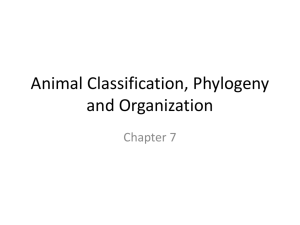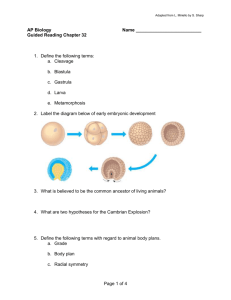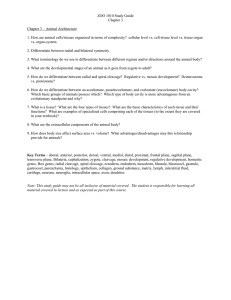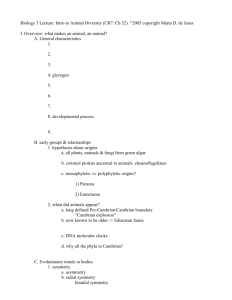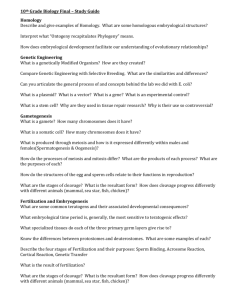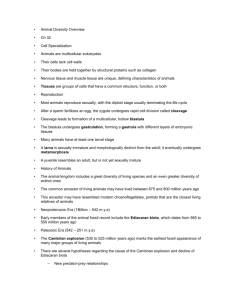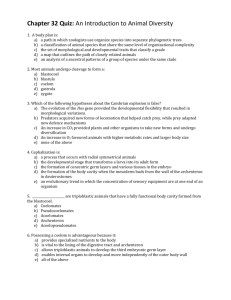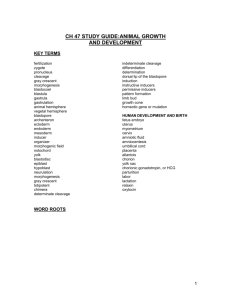Name Date Ch 32-34 Reading guide – Animal Diversity Explain the
advertisement
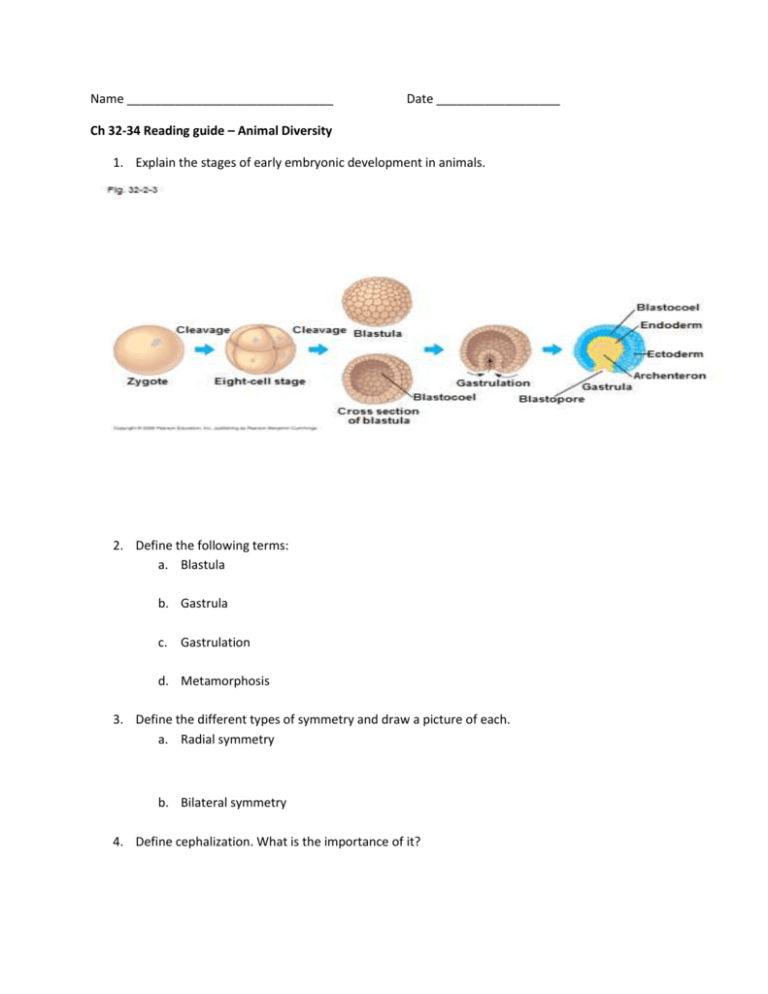
Name ______________________________ Date __________________ Ch 32-34 Reading guide – Animal Diversity 1. Explain the stages of early embryonic development in animals. 2. Define the following terms: a. Blastula b. Gastrula c. Gastrulation d. Metamorphosis 3. Define the different types of symmetry and draw a picture of each. a. Radial symmetry b. Bilateral symmetry 4. Define cephalization. What is the importance of it? 5. Complete the chart below. Body tissue Ectoderm What layers it eventually forms Endoderm mesoderm 6. What is the difference between a diploblastic animal and a triploblastic animal? 7. Body cavities: Define the following and give an example of an animal with each. a. Coelom b. Pseudocoelom c. Acoelomate 8. Describe the following types of cleavage patterns: a. Spiral cleavage b. Determinate cleavage c. Radial cleavage d. Indeterminate cleavage 9. Explain the difference between protostome development and deuterostome development using the figure above. Give examples of organisms with each type of development. Ch 33 – Invertebrates and Ch 34 Vertebrates 10. Define invertebrates and vertebrate. 11. Complete the attached table on the next page while reading Ch 33 and 34. Where terms are bold – define them within the table. 12. Define the following terms: notochord, pharyngeal slits, dorsal hollow nerve cord, muscular anal tail. What is the significance of these structures? 13. Read p. 728-733 and discuss how man has evolved. Include in your discussion how man differs from other apes.
